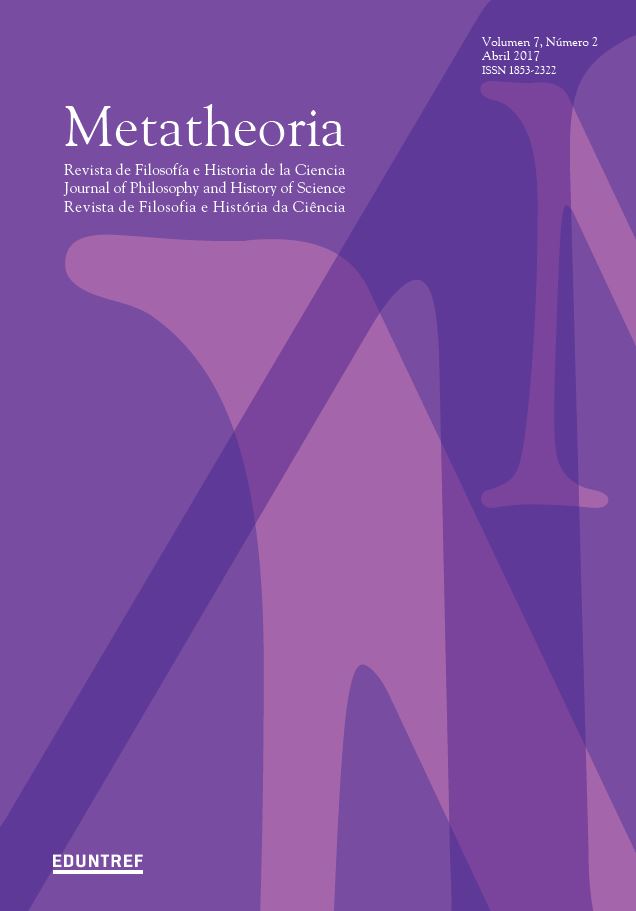Orthodox Quantum Mechanics: A Theory as Successful as Incoherent
DOI:
https://doi.org/10.48160/18532330me7.152Keywords:
quantum measurements, time-dependent perturbation theoryAbstract
The experimental success of Orthodox Quantum Mechanics is imposing, but it confronts conceptual flaws. It opposes determinism, admits a peculiar form of action-at-a-distance and renounces realism. Orthodox Quantum Mechanics formalism involves two different laws of change of the state of the system: the Schrödinger Equation and the Projections Postulate. Spontaneous processes are governed by the former, a deterministic law. The second rules measurement processes according to probability laws. It is agreed that Time -Dependent Perturbation Theory must be used for solving problems involving time. A careful analysis makes apparent that this theory involves both laws of change. This is also true for spontaneous processes, where the Projection Postulate is supposed to play no role. The need to invoke a law valid only in cases where measurements are performed to account for spontaneous processes is an incoherence that we have not seen mentioned in the literature.
References
Bell, J.S. (1984), “Beables for Quantum Field Theory”, CERN-TH-4035: 1-10.
Bell, J.S. (1990), “Against ‘Measurement’”, en Miller, A.I. (ed.), Sixty-Two Years of Uncertainty, Nueva York: Plenum Press, pp. 17-31.
Bes, D. (2004), Quantum Mechanics, Berlín-Heidelberg: Springer.
Born, M. y A. Einstein (1971), The Born-Einstein Letters, Londres: Macmillan.
Bunge, M. (1985), Treatise on Basic Philosophy, Vol 7, Philosophy of Science & Technology, Dordrecht-Boston-Lancaster: Reidel.
Bunge, M. (1978), Filosofía de la física,Barcelona-Caracas-México: Ariel.
Burgos, M. (2016), “Success and Incoherence of Orthodox Quantum Mechanics”,Journal of Modern Physics7: 1449-1454.
Burgos, M. (2015a), “Evidence of Action-at-a-Distance in Experiments with Individual Particles”, Journal of ModernPhysics 6: 1663-1670. Burgos, M. (2015b), “The Measurement Problem in Quantum Mechanics Revisited”, en Pahlavani, M. (ed.)(2015), Selected Topics in Applications of Quantum Mechanics, Croatia: INTECH, pp. 137-173.
Burgos, M. (2010), “Contradictions between Conservation Laws and Orthodox Quantum Mechanics”, Journal ofModern Physics 1: 137-142.
Burgos, M. (2008), “Transitions to the Continuum: Three Different Approaches”, Foundations of Physics38(10): 883-907.
Burgos, M., Criscuolo, F. y T. Etter (1999), “Conservation Laws, Machines of the First Type and Superluminal Communication”, Speculations in Science and Technology21(4): 227-233.
Burgos, M. (1998), “Which Natural Processes Have the Special Status of Measurements?”, Foundations of Physics28(8): 1323-1346.
Burgos, M. (1994), “¿Es siempre válido el principio de conservación de la energía?”, Filosofía6: 75-87.
Cohen-Tannoudji, C., Diu, B. y F. Laloë (1977), Quantum Mechanics, NuevaYork-Londres-Sydney-Toronto: John Wiley & Sons.
Criscuolo, F. y M. Burgos (2000), “Conservation Laws in Spontaneous and Measurement-Like Individual Processes”, Physics Essays 13(1): 80-84.
Dirac, P. (1930), The Principles of Quantum Mechanics, Oxford: Clarendon Press.
Jammer, M. (1974), The Philosophy of Quantum Mechanics, NuevaYork-Londres-Sydney-Toronto: John Wiley & Sons.
Merzbacher, E. (1998), Quantum Mechanics, NuevaYork: John Wiley & Sons.
Messiah, A. (1965), Mécanique Quantique, París: Dunod.
Tegmark, M. y J. Wheeler (2001), “100 Years of Quantum Mysteries”, Scientific American284(2): 68-75.
von Neumann, J. (1932), Mathematische Grundlangen der Quantenmechanik, Berlin: Springer.
Downloads
Published
How to Cite
Issue
Section
License
Copyright (c) 2017 Metatheoria – Journal of Philosophy and History of ScienceThe documents published here are governed by the licensing criteria
Creative Commons Argentina.Atribución - No Comercial - Sin Obra Derivada 2.5 https://creativecommons.org/licenses/by-nc-nd/2.5/ar/





